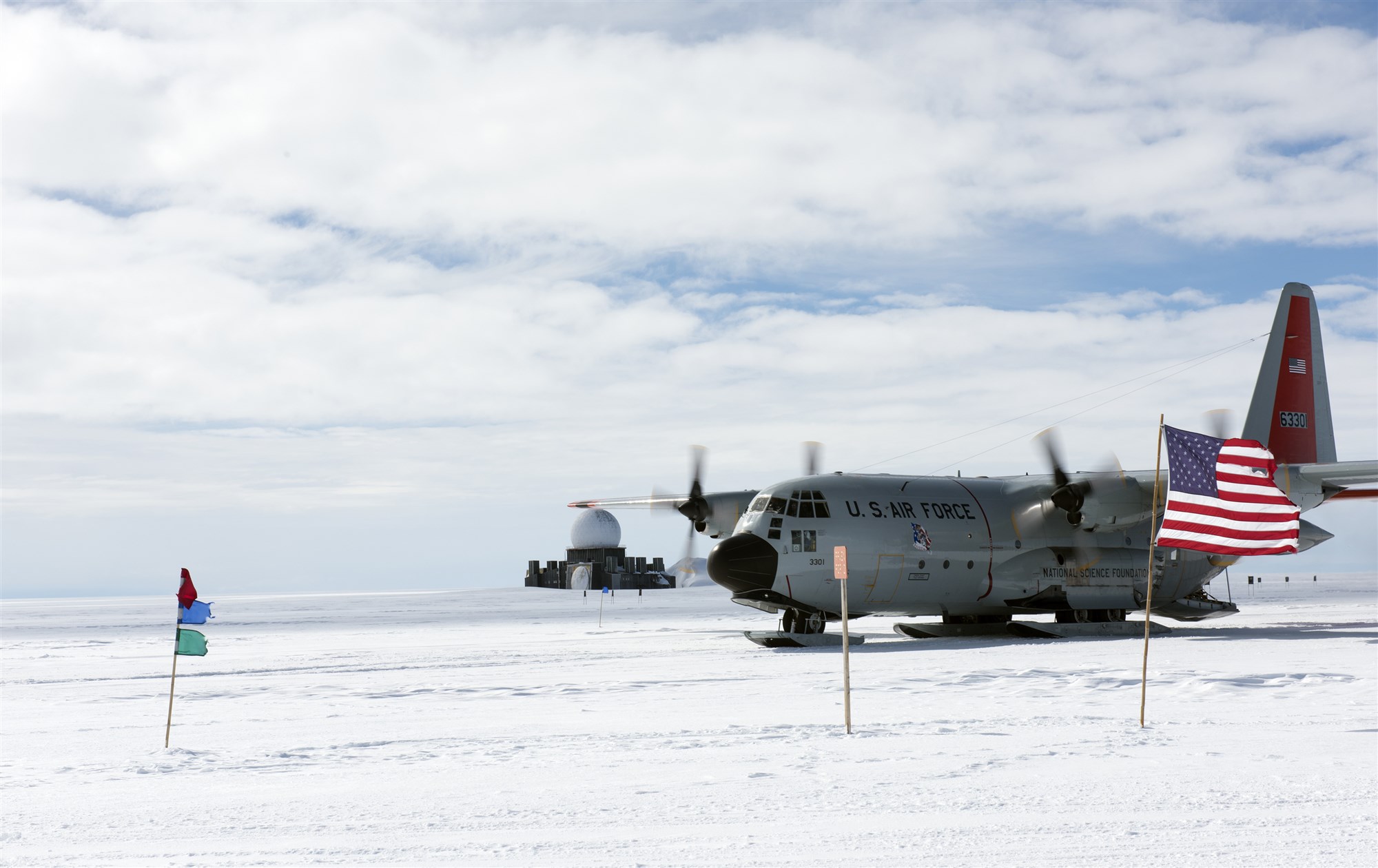Take Greenland Seriously and Literally as a Vital National Security Issue
Mentioning Greenland may invite laughs about President Trump’s rash interest in purchasing the island. Joking, however, overlooks the significant impact that Greenland will have on U.S. interests within the next decade.

Published by The Lawfare Institute
in Cooperation With

It is tempting to dismiss talk of Greenland’s significance for defense and foreign policy simply because President Trump infamously made it a punch line last year.
The world’s largest island, after all, had generally stayed off the public’s radar—and even that of most national security analysts—until the Wall Street Journal reported in August 2019 that the president wanted to purchase it from Denmark. His wishes hit headlines just ahead of his trip to Copenhagen to meet with Danish Prime Minister Mette Fredericksen and Kim Kielsen, prime minister of autonomous Greenland. Fredericksen responded that she had no interest in speaking with Trump about the island’s status, which prompted the president on Aug. 20 to postpone that meeting—by tweet, naturally:
Denmark is a very special country with incredible people, but based on Prime Minister Mette Frederiksen’s comments, that she would have no interest in discussing the purchase of Greenland, I will be postponing our meeting scheduled in two weeks for another time....
— Donald J. Trump (@realDonaldTrump) August 20, 2019
Ever since, mentioning Greenland in conversation brings more chuckles and snarky one-liners than thoughtful commentary. Joking about the island, however, overlooks the significant impact that it will have on U.S. interests within the next decade. In fact, the intersection of geopolitics, climate change and resource economics places Greenland at the heart of 21st century national security because sea lanes around the island are opening up—providing new and cheaper shipping and military routes—and because Greenland’s mineral wealth is drawing foreigners to the island.
On Top of the World
Greenland has long sat astride important sea lanes, but their strategic significance became clear only in the second half of the 20th century. For centuries, these routes were limited to hunting and trading by native populations, exploration by Norse sailors, and adventurism by other Europeans seeking the famed Northwest Passage. World War II finally brought international attention to Greenland, especially after Denmark’s surrender to Nazi Germany left the islanders in limbo. Opting for U.S. protection looked like Greenlanders’ least worst option, so they handed the Americans de facto control over a mine of cryolite (used to produce aluminum) and permission to establish airfields on the vast island. Allied and German combatants limited their direct conflict on Greenland to the vicinity of the handful of small weather stations that the Germans had established along the east coast. In 1945, Copenhagen’s liberation led to resumed Danish control.
The wartime presence of Americans and the NATO alliance including both the U.S. and Denmark set the stage for U.S. strategic use of Greenland during the Cold War. In the 1950s the U.S. embarked on a global program of base-building, which included Thule Air Base near the top of the island, within 1,000 miles of the North Pole. In the next four decades, Thule emerged as an important link in the chain of remote outposts that provided early warning of potential Soviet missile or air attacks, enabled long-range radio communications and served as a home for strategic bombers. An underground U.S. facility nearby, powered by the world’s first portable nuclear reactor, explored the feasibility of placing hundreds of medium-range nuclear-tipped missiles beneath the ice, but the significant and unpredictable shifting of the ice sheet above the secretive base rendered the prospect untenable. The opposite, southeast end of the island served as a terminus of the surveillance and reconnaissance chain by which NATO monitored the GIUK Gap—extending from Greenland to Iceland and then to the United Kingdom—to keep an eye on Soviet surface vessels and submarines.
These strategic advantages faded from popular attention with the end of the Cold War in the early 1990s. They did not, however, go away; increasingly aggressive Russian behavior in recent years has spurred a revival of U.S military planners’ interest in what Greenland’s location has to offer. Thule Air Base continues its traditional functions while now also playing an increasingly significant role in U.S. space surveillance and control. And attention to the GIUK Gap is on the rise as Russia expands its navy and uses its maritime assets more aggressively in the Arctic and beyond.
The effects of climate change further elevate Greenland’s importance in the 21st century. The waters around the island are becoming accessible longer into the winter, and the land itself is losing ice some seven times faster than it was in the 1990s. Melting ice in the Arctic opens up sea lanes around the island that provide new and cheaper routes for U.S. allies and competitors alike to ship goods to lucrative markets in Europe and beyond. Non-Arctic powers have thus taken a growing interest in the region. The Arctic Council forum, which includes as members the eight Arctic countries (Canada, Denmark, Finland, Iceland, Norway, Russia, Sweden and the United States), has recently added 13 observers—including China, India, Singapore and South Korea in 2013.
All these changes have led to increased geopolitical pressure, in particular, from Russia and China. A submersible in 2007 placed a titanium Russian flag on the seabed underneath the North Pole, several previously deactivated Russian military outposts in the Arctic are active again, and Moscow in 2019 announced restrictions on foreign warships taking the Northern Sea Route. Meanwhile, Beijing has declared itself a “near Arctic state.” Greenland features prominently in China’s plans to establish a “Polar Silk Road” through these newly available shipping routes in the Arctic. And as the Chinese military’s recent behavior in the Indian Ocean demonstrates, Beijing tends to expand its military assets and strategic relationships to protect trade routes. China has added a research station in Iceland to its extant one in Norway, invested in icebreakers and offered to construct airports in Greenland.
In turn, this pressure is driving heightened U.S. military interest in Greenland’s infrastructure. It came as little surprise that the U.S. under secretary of defense for policy used a visit to Thule Air Base in 2018 to sign a declaration of intent to put money into dual-use civilian and military infrastructure on the island. “These investments,” the statement said, “would seek to enhance U.S. and NATO capabilities in the North Atlantic region.” And in May 2019, the 2nd Fleet declared initial operational capability, with responsibility for not only the U.S. East Coast and North Atlantic but also the Arctic region into the Barents Sea.
The Common Need for Rare Earth Metals
This global thaw is heating up more than military activity in Greenland. Rare earth elements, which the ice sheet and permafrost had made virtually impossible to mine, are increasingly accessible. Many of these deposits now lie literally at one’s feet while walking across parts of the island. Shining ultraviolet light on rock outcroppings at Kvanefjeld, one of the largest concentrations of rare earth elements on Greenland, reveals a colorful array of oranges and purples that soften the stark surrounding landscape.
Rare earths form a family of 17 minerals, which despite their name are not all uncommon. Even so, these raw materials have outsized geostrategic importance: Their unique electrical and magnetic properties make them essential for the production of a range of everyday devices, from cell phones to flat screens to medical devices, and of growing importance for the renewable energy industry. Rare earths and rare earth magnets are also critical to missile guidance systems and sonar. The F-35 fighter aircraft contains more than 900 pounds of rare earths; a Virginia-class submarine 10 times that.
The spotlight on Greenland’s mineral wealth is powered by concerns regarding China’s control over the rare earths supply chain. Beginning in the early 1990s, China set out to dominate the global market; today, it accounts for more than 70 percent of global rare earths supplies and has a near monopoly over global processing capacity. Beijing’s threat to cut off exports to the United States last year set off alarm bells in Washington. Similar hand-wringing had occurred in 2010 when Beijing cut off rare earths exports to Japan during a territorial dispute.
The Trump administration and Congress have started to respond. The Department of Commerce issued a strategy in June 2019 to address supply chain vulnerabilities. The Pentagon is looking to fund rare earths production in the United States and abroad. A bipartisan group of senators submitted a bill to fund the development of technologies to extract rare earths from coal. And Sen. Marco Rubio of Florida proposed legislation to create a rare earths industry cooperative. Private industry is warming up its efforts, too, with investments in new mining and processing infrastructure in the United States, Australia and Canada. These efforts will help diversify and secure this essential supply chain.
And the rare earths bonanza in Greenland is too strategically important to leave alone. Greenland’s reserves of these important raw materials are big. Kvanefjeld and Kringlerne (on the southern tip of the island) are among the top 10 largest rare earths deposits in the world. Much of the island remains to be surveyed in detail, and retreating ice sheets make the discovery of new major deposits increasingly likely. Furthermore, many of the deposits are readily accessible by sea, which will allow mined ore to be ferried away en masse to processing facilities in more temperate climes.
China has recently tried to muscle in to Greenland’s growing rare earths market. The Kvanefjeld deposit is particularly attractive to rare earths prospectors in that it consists of alkaline igneous rock with high concentrations of heavy rare earths, critical to creating magnets used in wind turbines, electronic devices and defense systems. China currently controls the world’s supply chain for rare earth magnets, a strategic position that Beijing is not eager to relinquish. A selling point to Greenlanders is Chinese expertise in mining and processing rare earths, although their past practice falls short of environmental standards that would be acceptable to Westerners. This is of particular concern for the Kvanefjeld deposits because of the high incidence of radioactive uranium and thorium. It should come as no surprise that a Chinese firm has a minority stake in Australia-based Greenland Minerals, the company that owns the rights to develop the Kvanefjeld area for rare earths mining. Overall, resource exploration, exploitation and development feature prominently in Beijing’s 2018 white paper “China’s Arctic Policy.”
Greenlanders, eager for greater independence from Denmark and expanded economic opportunities for themselves, have largely welcomed China’s outreach. In response, Washington is increasingly assertive in leaning on Copenhagen to rein in Beijing’s overtures. This often does not sit well with the locals, who by and large just want a better life—without becoming pawns in a geopolitical contest. The United States will have to proceed with care and consideration of Greenlanders’ wants and sensibilities as it tries to counter Chinese influence.
All Eyes Looking Up
Competing resource demands and a plethora of other geopolitical hot spots have kept the U.S. from fully engaging in the Arctic. This leaves an opening for China in particular, as a self-declared “near Arctic state,” to make huge gains by investing in Greenland’s rare earths and critical minerals and by expanding its ability to project force in the region. China’s ambitions in Greenland are part of a broader strategy to control access to the Northern Sea Route by integrating into the island’s small economy, expanding that economy, and constructing infrastructure like airports and port facilities.
If Washington is serious about minimizing Beijing’s influence in the Arctic, Greenland is ground zero. Putting aside fantasies about buying the island, the White House and Congress should consider ways to help Greenland diversify and expand economically, shore up the U.S. military presence there, and work with Denmark and Greenland to design a development road map that meets everyone’s needs as part of an overarching U.S. Arctic strategy.






